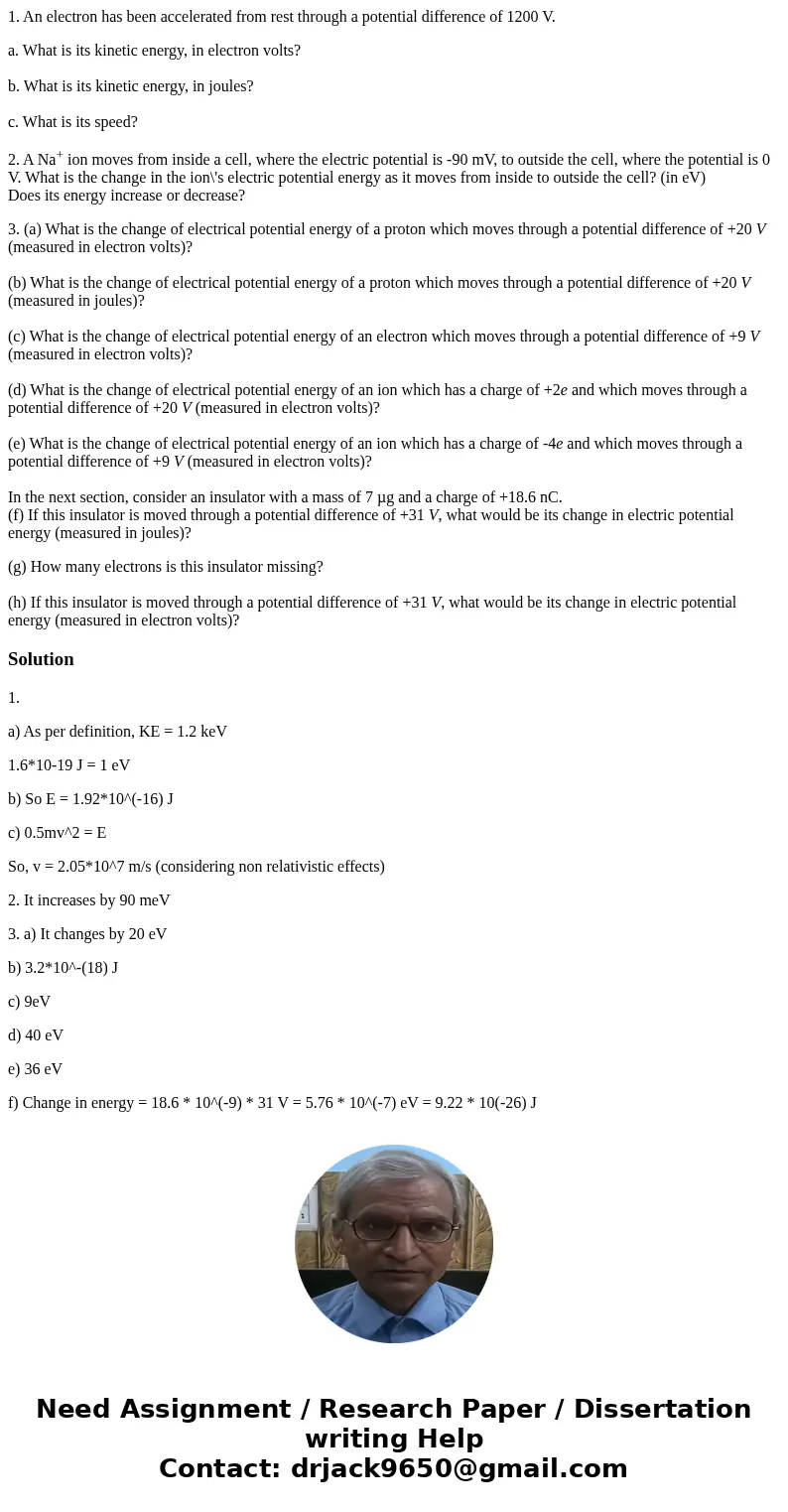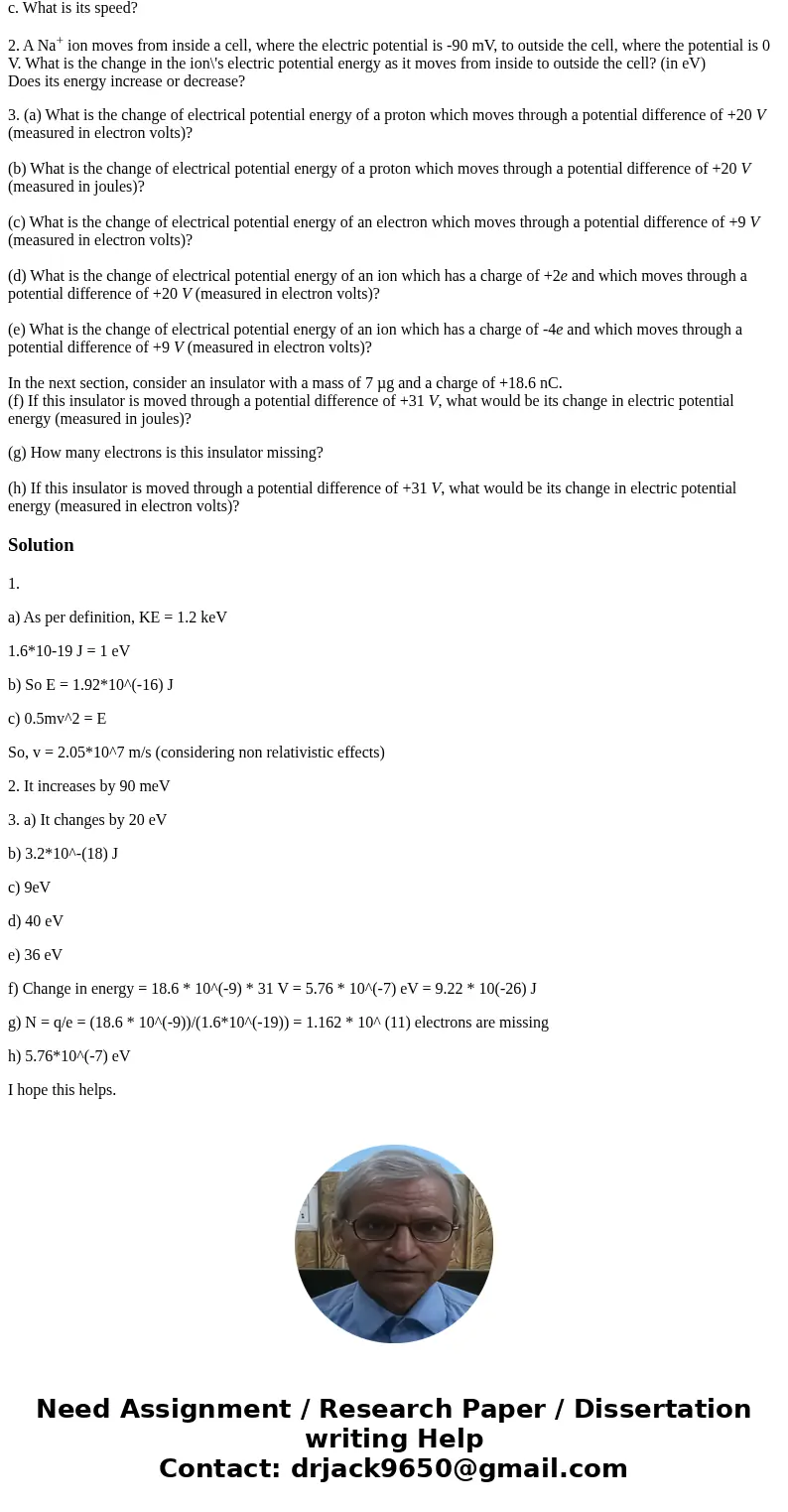1 An electron has been accelerated from rest through a poten
1. An electron has been accelerated from rest through a potential difference of 1200 V.
a. What is its kinetic energy, in electron volts?
b. What is its kinetic energy, in joules?
c. What is its speed?
2. A Na+ ion moves from inside a cell, where the electric potential is -90 mV, to outside the cell, where the potential is 0 V. What is the change in the ion\'s electric potential energy as it moves from inside to outside the cell? (in eV)
Does its energy increase or decrease?
3. (a) What is the change of electrical potential energy of a proton which moves through a potential difference of +20 V (measured in electron volts)?
(b) What is the change of electrical potential energy of a proton which moves through a potential difference of +20 V (measured in joules)?
(c) What is the change of electrical potential energy of an electron which moves through a potential difference of +9 V (measured in electron volts)?
(d) What is the change of electrical potential energy of an ion which has a charge of +2e and which moves through a potential difference of +20 V (measured in electron volts)?
(e) What is the change of electrical potential energy of an ion which has a charge of -4e and which moves through a potential difference of +9 V (measured in electron volts)?
In the next section, consider an insulator with a mass of 7 µg and a charge of +18.6 nC.
(f) If this insulator is moved through a potential difference of +31 V, what would be its change in electric potential energy (measured in joules)?
(g) How many electrons is this insulator missing?
(h) If this insulator is moved through a potential difference of +31 V, what would be its change in electric potential energy (measured in electron volts)?
Solution
1.
a) As per definition, KE = 1.2 keV
1.6*10-19 J = 1 eV
b) So E = 1.92*10^(-16) J
c) 0.5mv^2 = E
So, v = 2.05*10^7 m/s (considering non relativistic effects)
2. It increases by 90 meV
3. a) It changes by 20 eV
b) 3.2*10^-(18) J
c) 9eV
d) 40 eV
e) 36 eV
f) Change in energy = 18.6 * 10^(-9) * 31 V = 5.76 * 10^(-7) eV = 9.22 * 10(-26) J
g) N = q/e = (18.6 * 10^(-9))/(1.6*10^(-19)) = 1.162 * 10^ (11) electrons are missing
h) 5.76*10^(-7) eV
I hope this helps.


 Homework Sourse
Homework Sourse